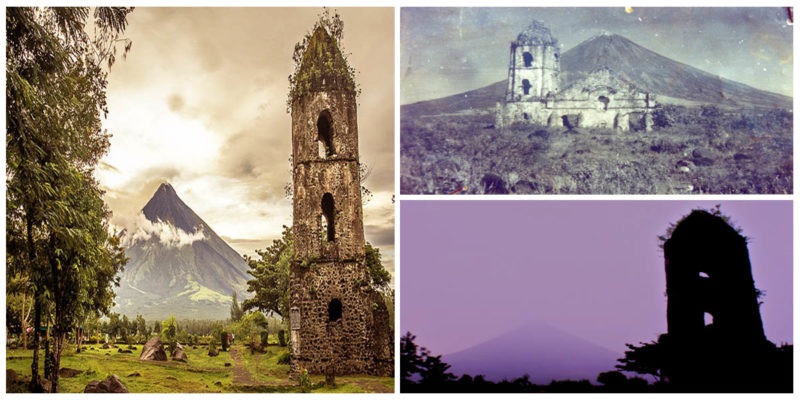These enchanting old ruins are all that is left of this 16th-century church of the Franciscan Order. The name given to the piles of rock that once formed something so magnificent is Cagsawa, for it was part of a town carrying the same name, in the province of Albay, the Philippines.
The name itself comes from the word “kag” that literally translated it means an owner and the word “sawa” that translates to python. Another meaning closely tied to this name could be “plenty of”.
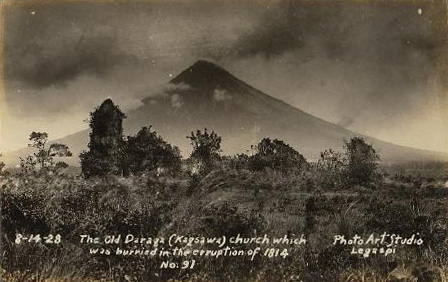
It came to be in 1587, during the Hispanic occupation. Borrowing the baroque model of architecture it was definitely a rare sight given its surroundings. Throughout the years the church suffered several dreadful moments such as an attack by Dutch pirates in 1636.
During this assault, the church was burned to the ground. The pirates targeted the church for it was easy prey. It remained it this desperate state for 88 years until it was finally erected anew by the Franciscan Order under the guidance of the Father Francisco Blanco.
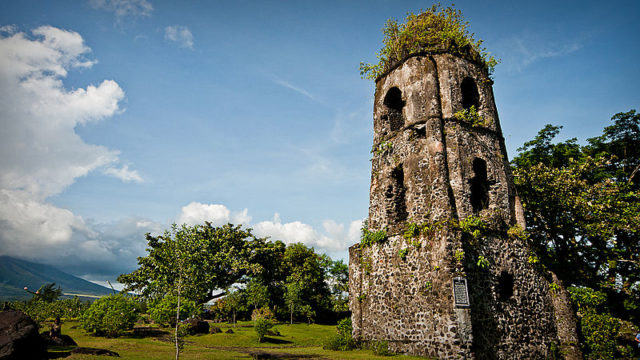
Once done the church was ready for a life of peace. It remained in this state of tranquillity for some 90 years. Then all of a sudden and without a warning a disaster happened. It was 1814, February 1, when the volcano Mayon spread its roar across the sky.
In one clear explosion, the volcano literally cracked opened and released hundreds if not thousands of tons of ash and debris comprised of tephra and lahar straight into the air and down upon the Albay province.
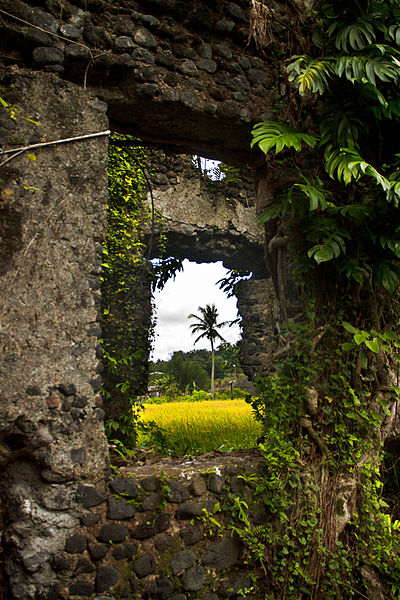
The eruption was so destructive that it killed around 2,000 people. The residents of the little village of Cagsawa had no choice but to flee. Some of them thought that hiding in the church would help but the pyroclastic flow came and killed everything in its path.
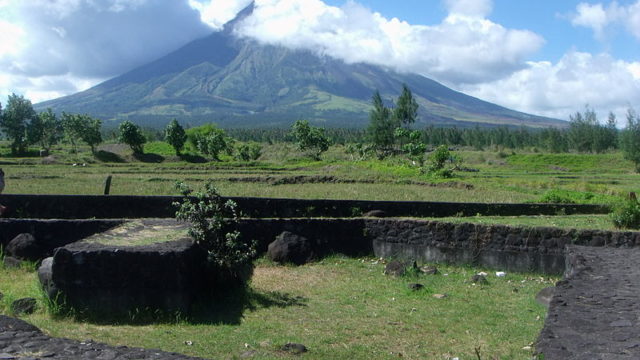
Needless to say but the church was destroyed. Once the dust and ash had settled the damage was evident. What remained of this church was the bell tower and small fraction of what once represented a church.
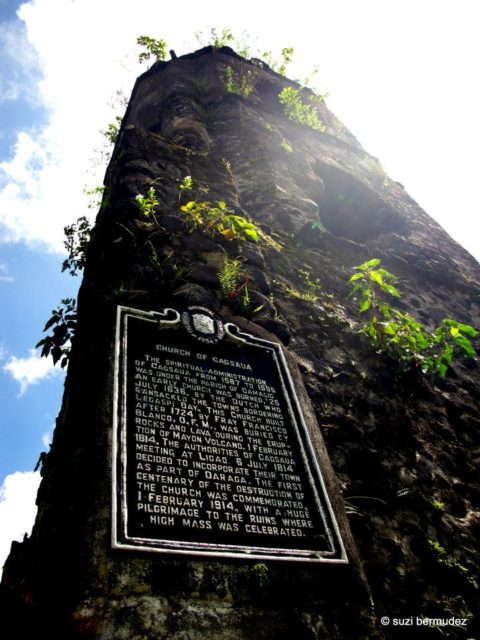
Those who managed to survive made a new home in the municipality of Daraga, that back then was nothing more than a neighborhood in Cagsawa.
Once more the church was left alone in its peace, that is until the 1950s. During this period, the area was hit by a series of earthquakes that did most of the damage on the church’s facade. After the earth stopped trembling everything returned to its everyday normalcy.
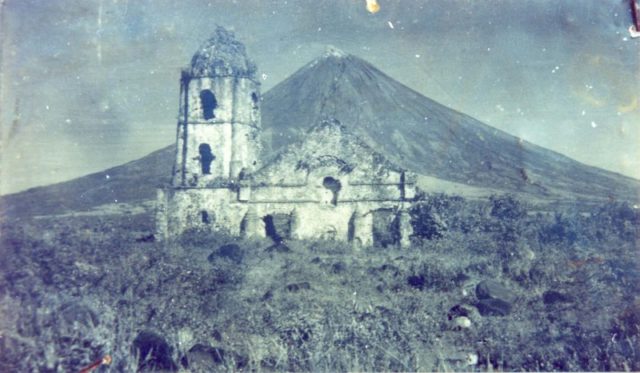
Then, 56 years later in 2006, the church’s peace was once more disturbed by the Durian typhoon. The church tower survived relatively intact even though the rest of the environment was totally destroyed. The aftermath of the typhoon was a largely destroyed area and around 1,200 causalities.
What little remains of this church today is part of the Cagsawa Ruins national park. Throughout the years, this church suffered numerous ill events. But despite all that, the remaining ruins are a witness of past times, and as a national landmark, it attracts huge numbers of tourists every year.
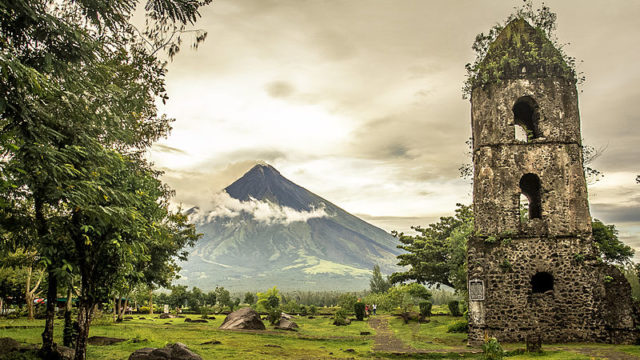
In 2014, the Albay province honoured the 200th anniversary since the frightful eruption in 1814. For this event, the Cagsawa Festival was organized, a festival in which people remember their predecessors and learn how to respect mother nature.
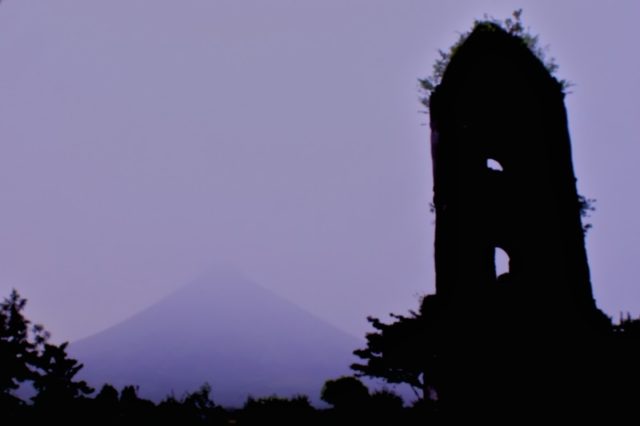
This park is now managed by the government of Daraga. Two years ago in 2015, this site was declared as a national cultural treasure, the highest possible title a historic relic can be gifted with.
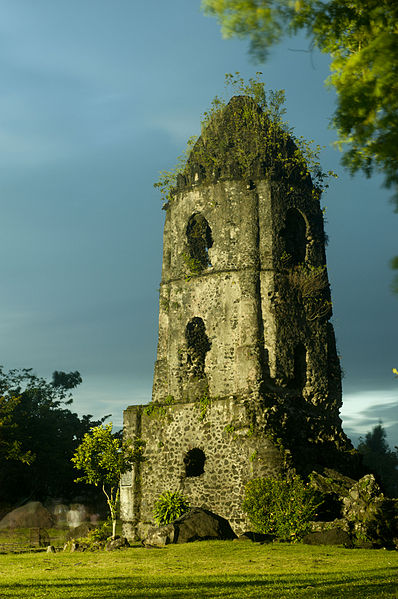
Today, 203 years later, the bell tower still welcomes everyone who wishes to tread under this lonely but strong mountain or to pay homage to those that went before. From pirates to typhoons, this church (well part of it) was able to withstand all.
